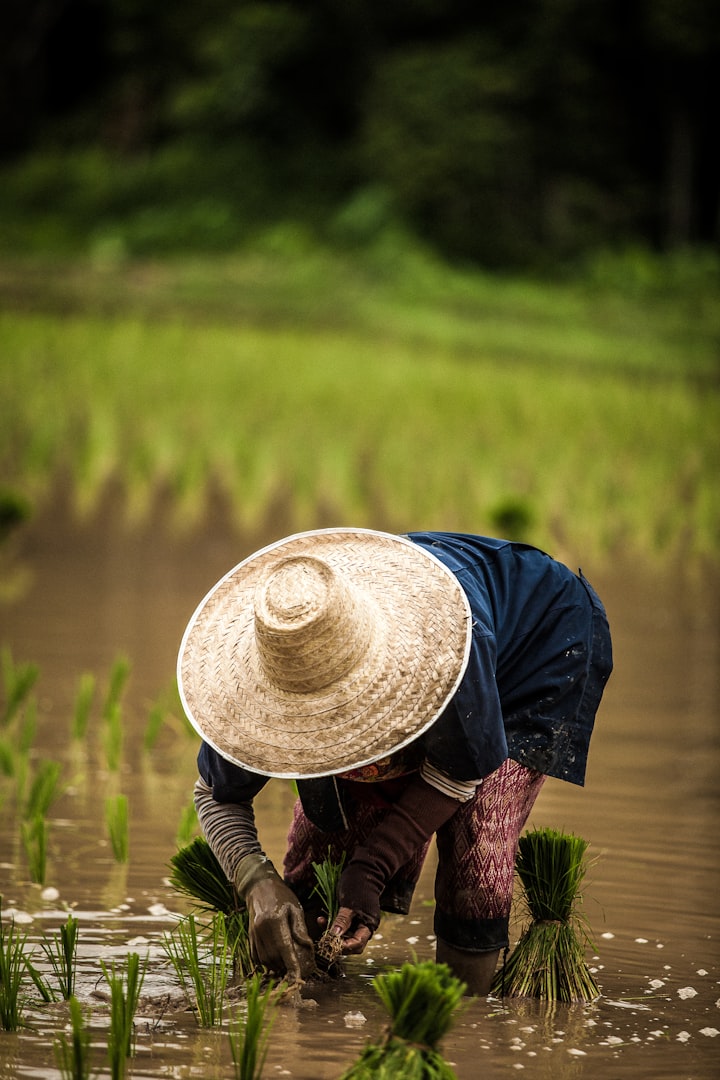
Rice is an incredibly popular crop, with its consumption outweighing that of any other food in the world. It contributes over 20% of the calories consumed by humans annually and is a key part in various cuisines such as Korean bibimbap, Nigerian jollof, and Indian biryani. But how did this humble grain become such a staple in so many cultures?
The origins of rice can be traced back thousands of years to when early farmers in Asia, Africa, and South America domesticated the crop independently. The first type of rice, Asian rice, is believed to have originated in what is now China over 10,000 years ago. Nomadic hunters in the region began gathering and consuming seeds from a weedy grass, and eventually started planting them, leading to the development of farming communities. As these communities harvested and replanted rice, they selected seeds from the plants that produced larger and more flavourful grains. This process of selection over generations resulted in the emergence of thousands of varieties of Asian rice.
Around 3,000 years ago, a relative of the same weedy grass was domesticated in Africa, primarily in West Africa. Similarly, South American farmers domesticated rice around 4,000 years ago, though the crop was eventually lost after the arrival of Europeans. However, Asian rice spread widely and is now a crucial element in the diets and cultures of many countries in Asia and beyond.
In countries like India and Nepal, rice is deeply ingrained in their culture, and many Hindu families mark an infant's transition to solid foods with a ceremony called Annaprashan, where the baby tastes rice for the first time. In Japan, rice is so essential to their diet that the word 'Gohan' means both 'cooked rice' and 'meal.'
One of the reasons for rice's global expansion is its adaptability to various climates, from tropical to temperate. This versatility allows for its cultivation in a wide range of regions, making it a vital food source for many communities.
Rice is a highly sought-after crop, but why is it so popular? The answer lies in its unique ability to thrive in submerged soils. Unlike other plants, rice has adapted to survive in standing water by developing air channels in its roots that allow oxygen to travel from the leaves and stems to the submerged tissues.
Traditionally, rice is grown in paddy fields - flat land that is submerged under up to 10 centimetres of water throughout the growing season. This method yields high production rates as most weeds are unable to survive in the aquatic environment. However, this technique is also water-intensive, with rice cultivation covering 11% of global cropland and using over a third of the world's irrigation water. Additionally, this form of rice production contributes to a surprisingly large amount of greenhouse gas emissions.
The flooded fields provide ideal conditions for microorganisms called methanogens to thrive. These tiny organisms evolved in environments with low oxygen levels and are the only known producers of methane - a greenhouse gas that is 25 times more potent than carbon dioxide at trapping heat in the atmosphere. Methanogens can be found in the stomachs of cows, which are notorious for burping out methane. In a flooded paddy field, methanogens feed on organic material in the submerged soil and rapidly multiply, releasing copious amounts of methane into the atmosphere. As a result, rice cultivation handles around 12% of human-caused methane emissions each year.
Rice is a staple food for millions of people around the world, but its popularity comes with a cost. The traditional method of growing rice involves continuously flooded paddies, which release substantial amounts of methane, a potent greenhouse gas. However, there is hope as researchers and growers are now exploring water management techniques that can reduce methane emissions while keeping high yields.
One such technique is called alternate wetting and drying, where growers periodically let the water level drop, keeping the growth of methane-producing bacteria in check. This method has shown promising results, with a reduction of water use by 30% and methane emissions by 30 to 70% without affecting the yield. By implementing this technique, we can make rice production more sustainable and reduce its impact on the environment.
It is crucial to address the issue of methane emissions from rice production as it is a significant contributor to greenhouse gases. These gases come from various sources, and it is essential to tackle each one to avoid catastrophic global warming. Therefore, finding ways to make rice production more sustainable is one of the many challenges we must face.
Despite the potential benefits of alternate wetting and drying, many rice growers still follow traditional methods and flood their fields all season long. This practice has been around for millennia, and changing it requires a major shift in mindset. However, it is a necessary step to protect our planet and ensure the availability of this vital food source for future generations.





Comments
There are no comments for this story
Be the first to respond and start the conversation.